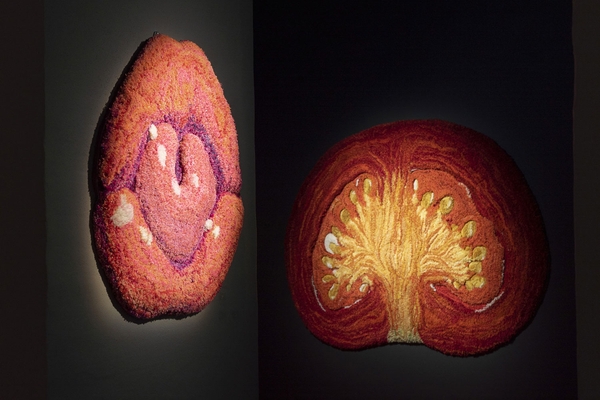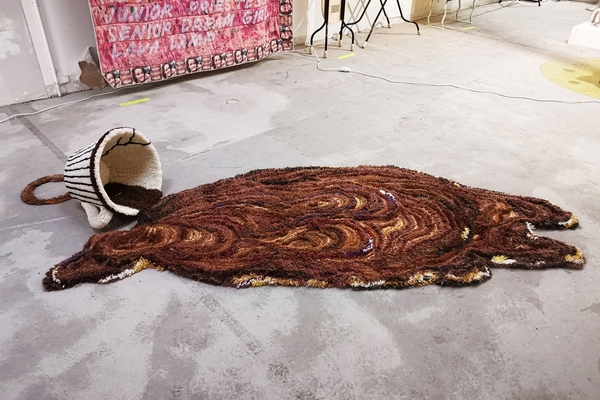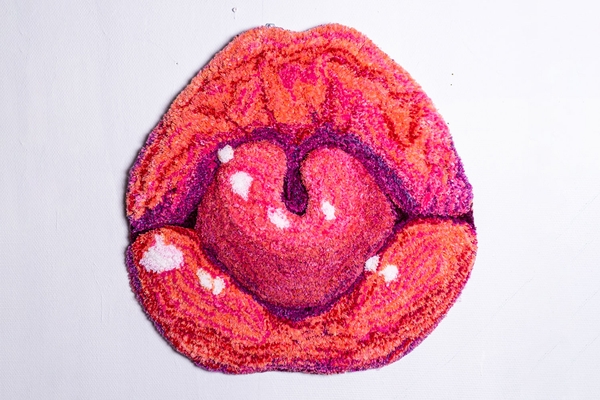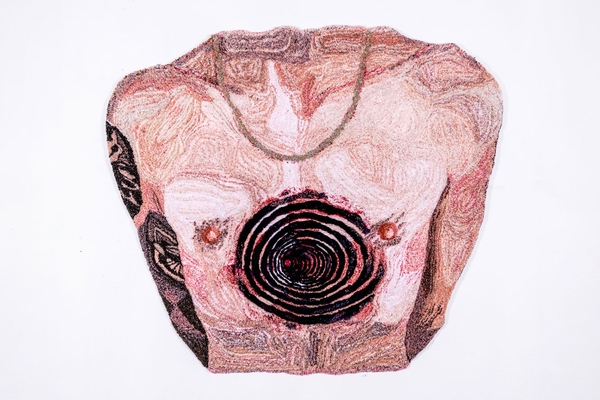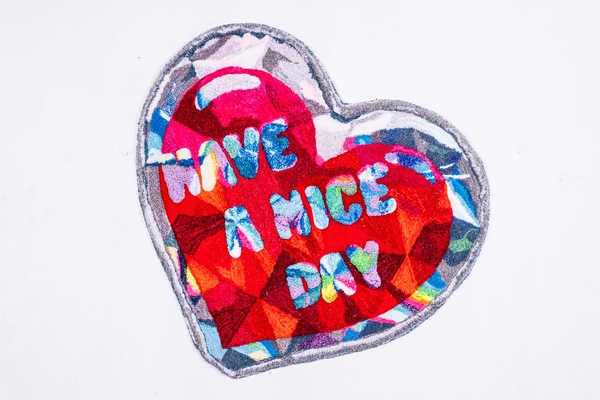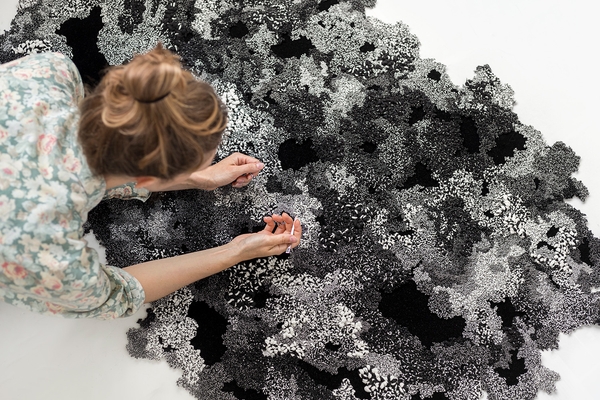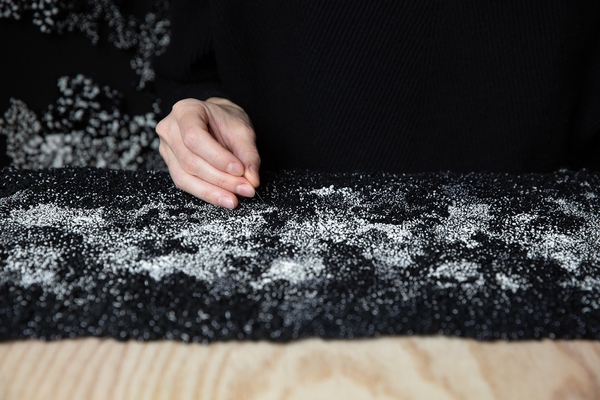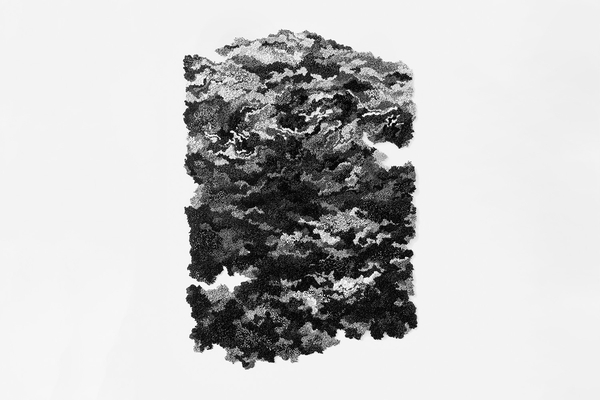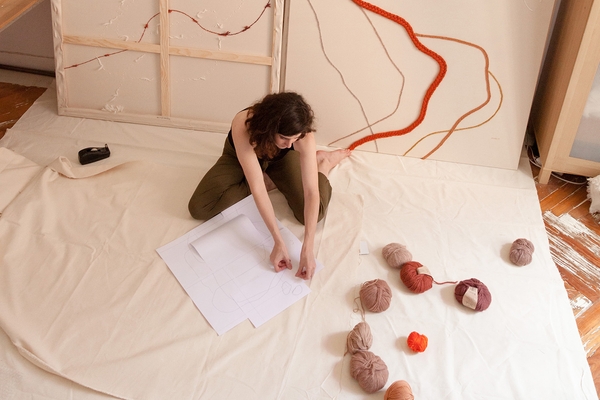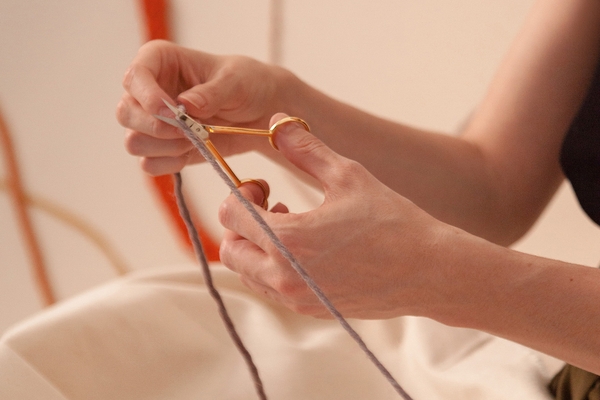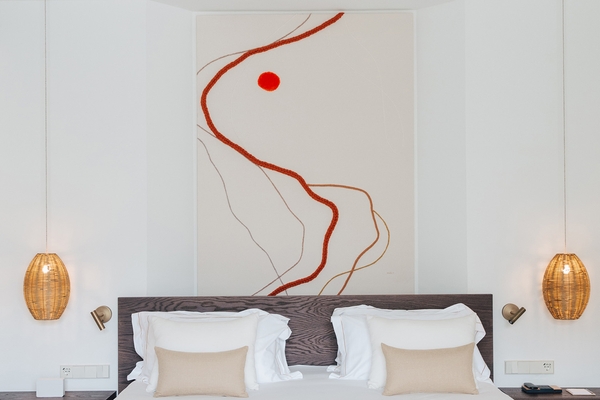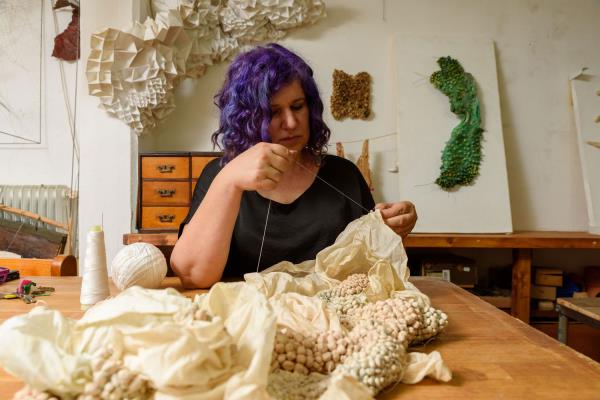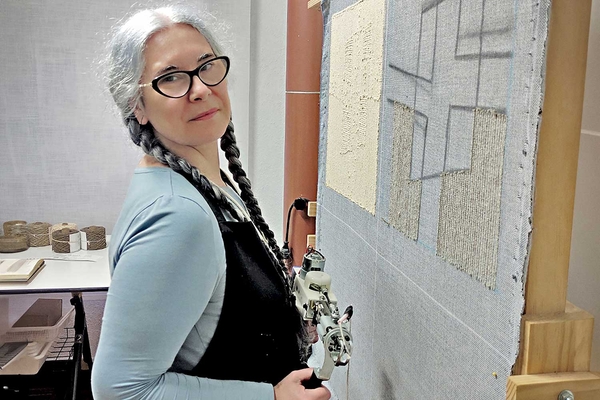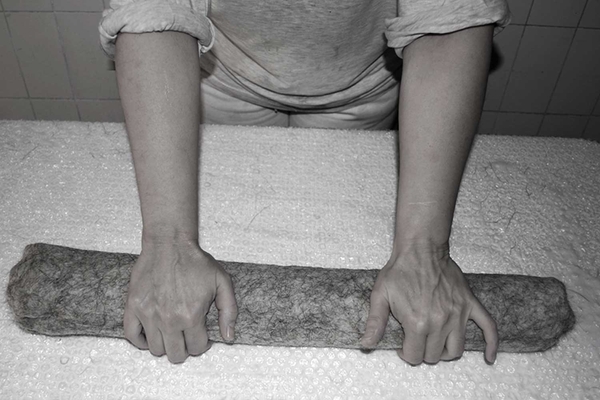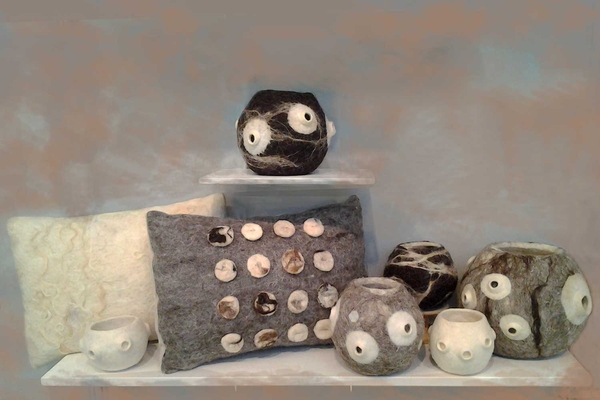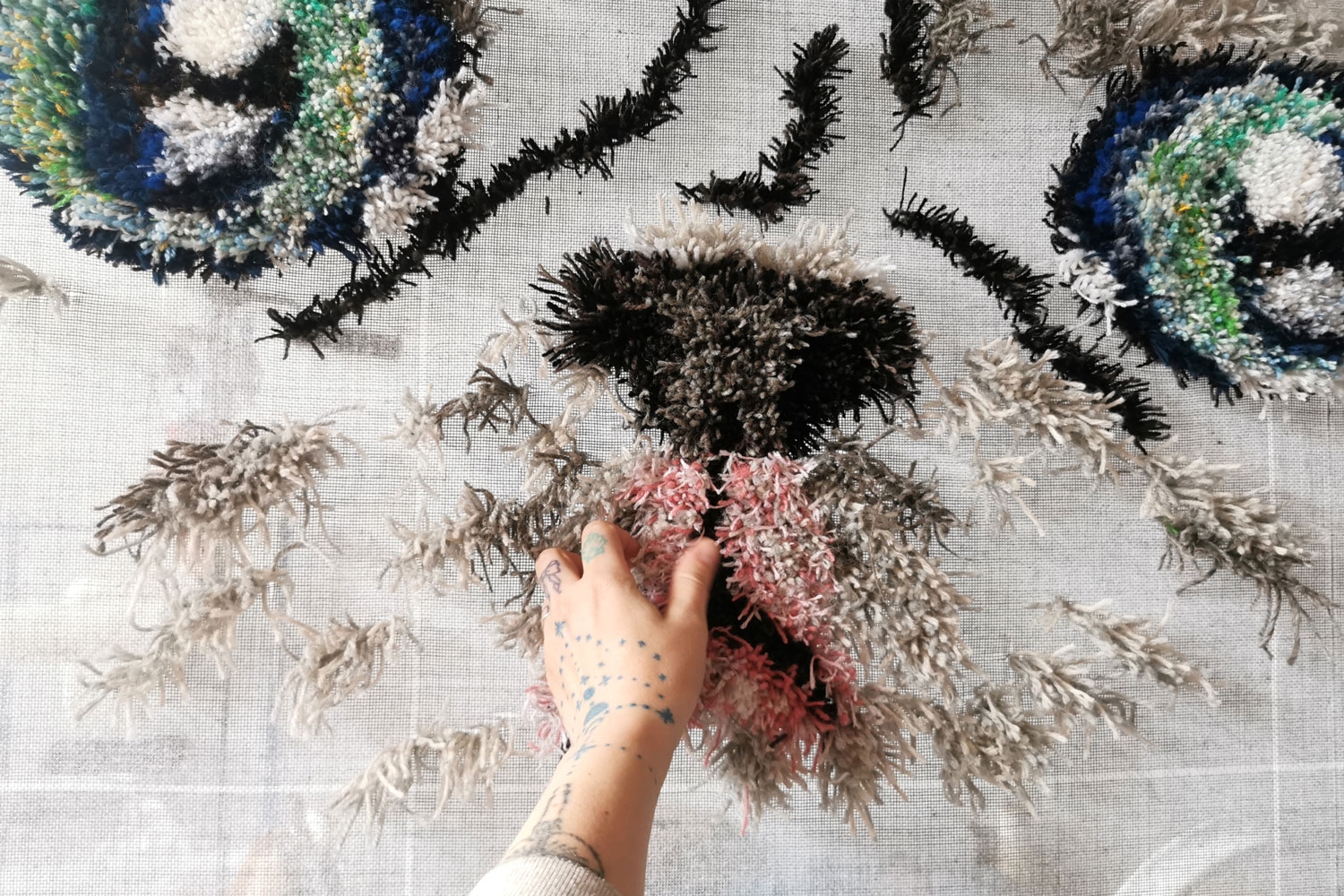
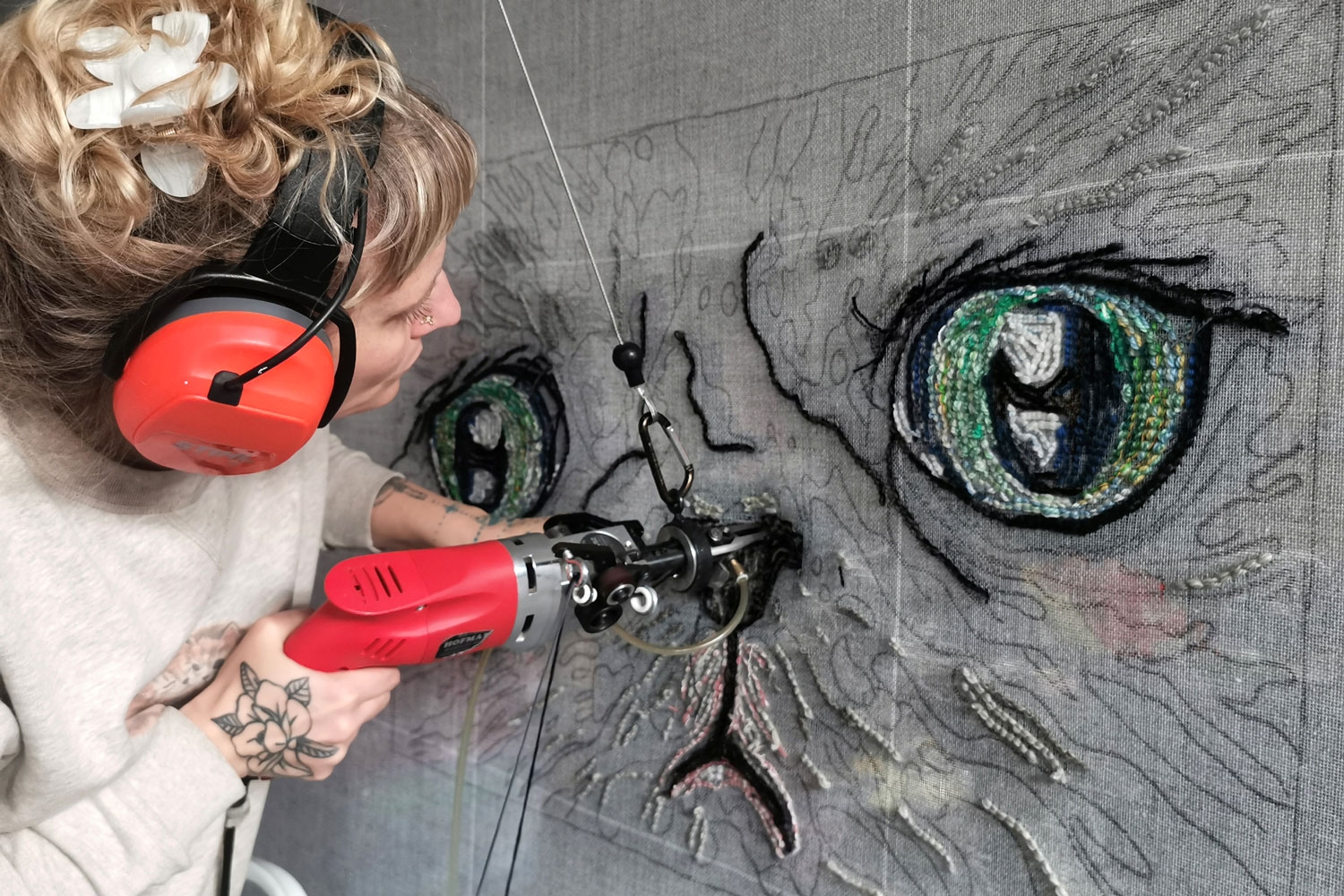
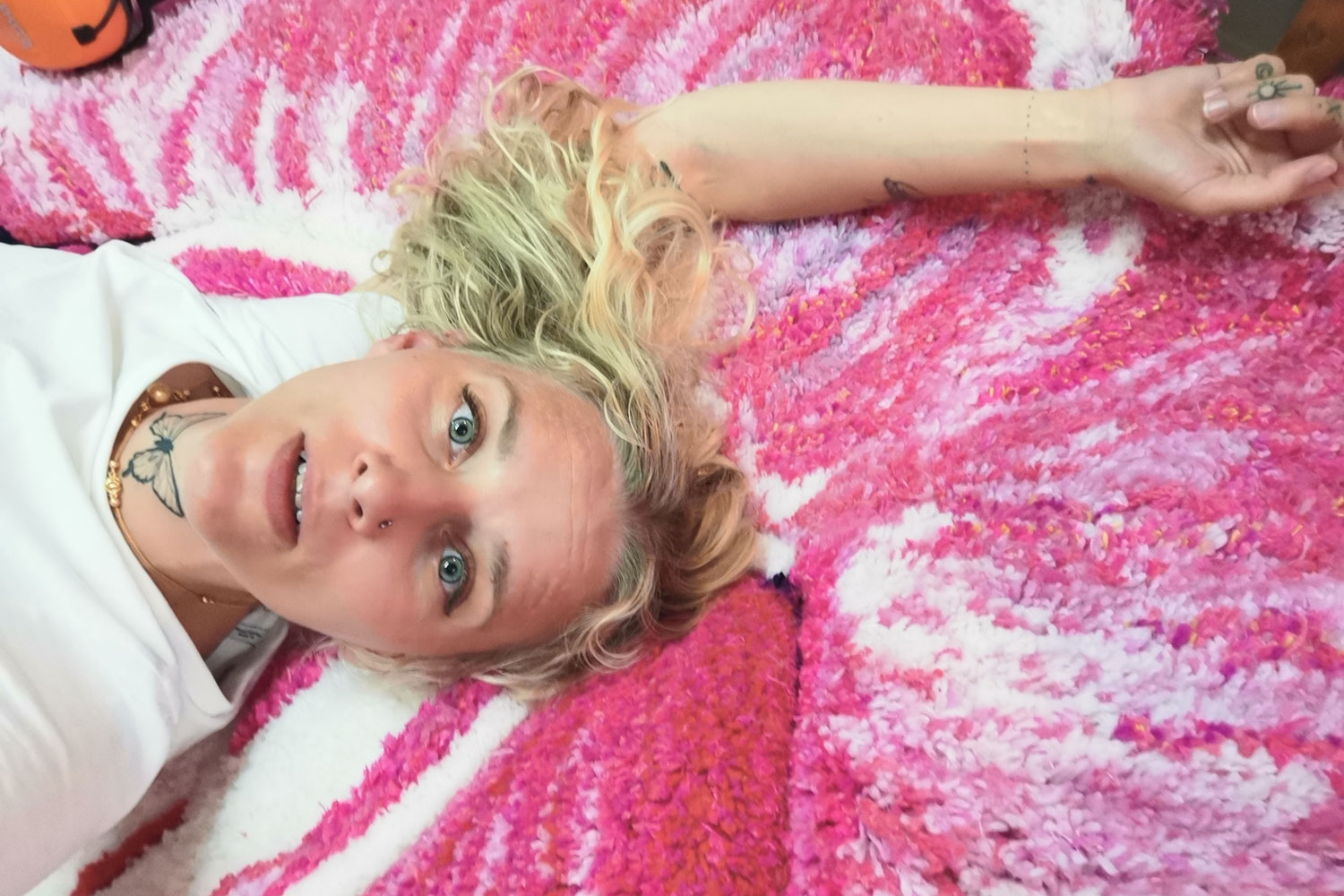
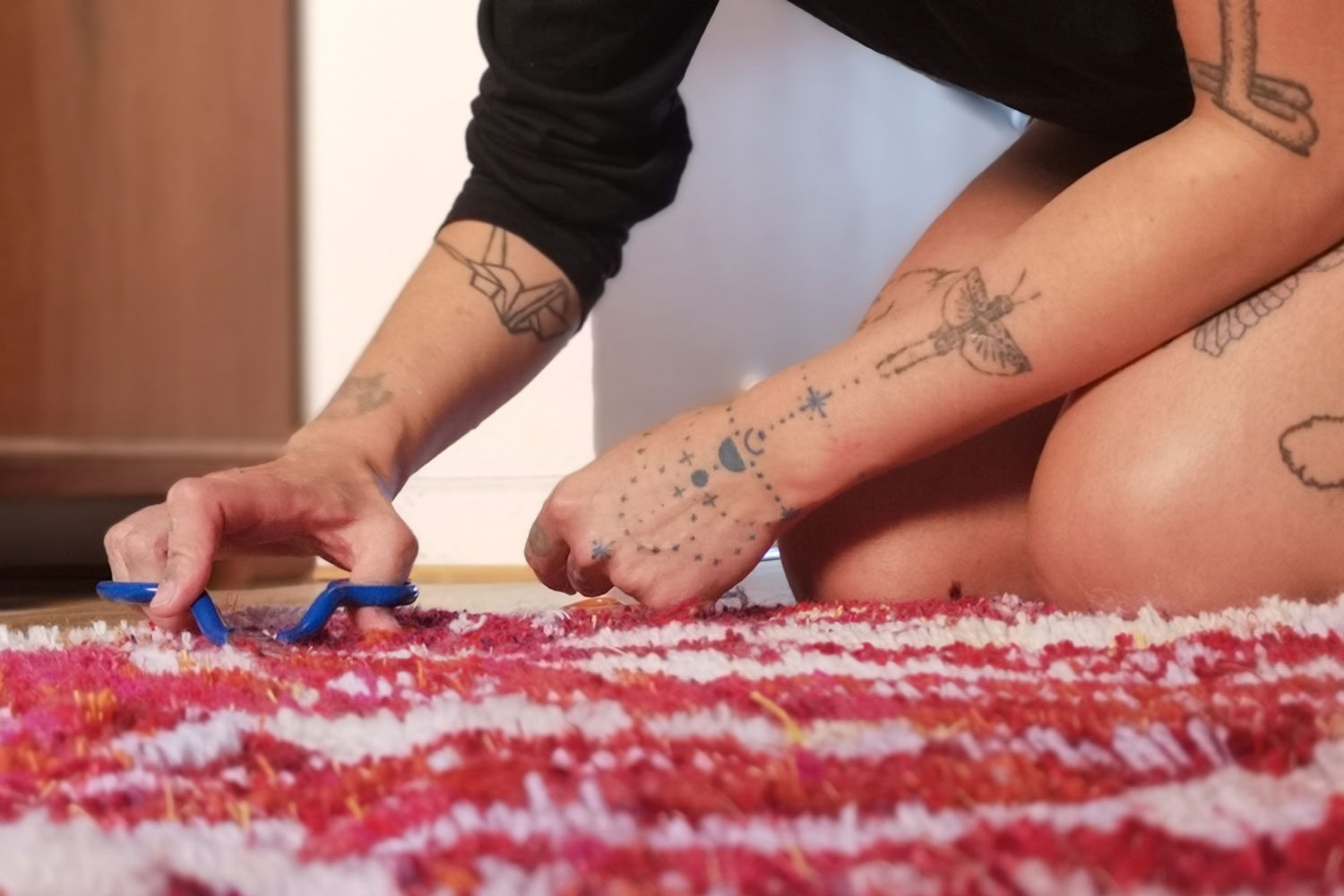
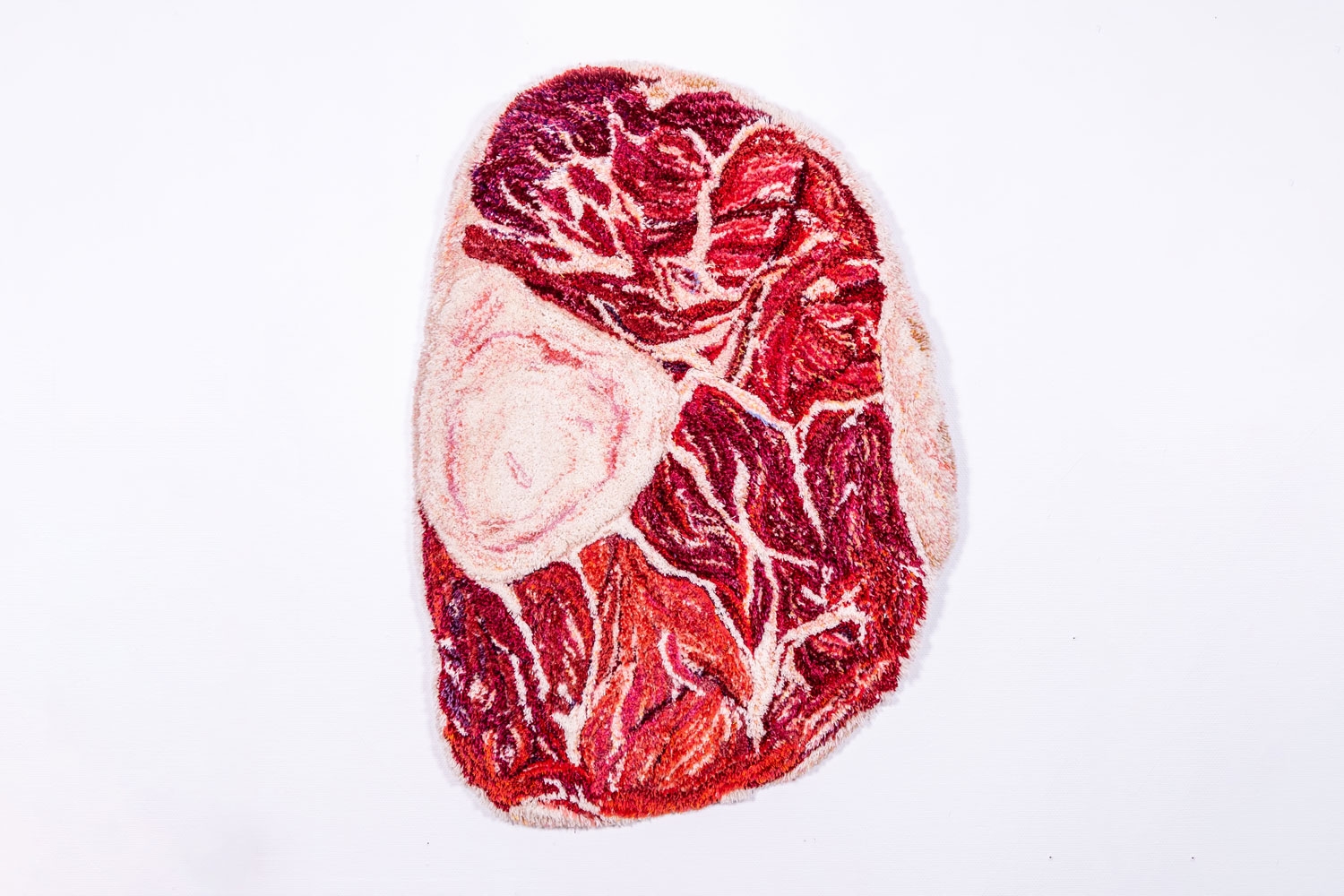





The unexpected side of ordinary things
- Maja uses the tufting technique in her textile work
- Her pieces are a large scale representation of ordinary objects
- She mainly uses wool, but still experiments with glitter yarn and mohair
Maja Michaelsdotter is a textile sculptor who uses the tufting technique to create her bold pieces. She grew up in a creative household surrounded by her parents' ceramics, woodwork and DIY projects, which helped develop her interest in art from a young age. At first, Maja considered working in fashion and attended some craft courses on sewing, printmaking and weaving. However, after realising she wanted to experiment more in textile sculpting, she applied to art school. "I wanted to try my hand at different techniques and materials, and this helped me find my true passion – tufting," Maja says. This technique, used for centuries in rug-making, is a type of embroidery on a larger scale that consists of inserting yarn into the back of a stretched fabric base to form a design on the front. Maja enjoys the freedom that comes with tufting and creates vibrant pieces with a pop-art twist.
Interview
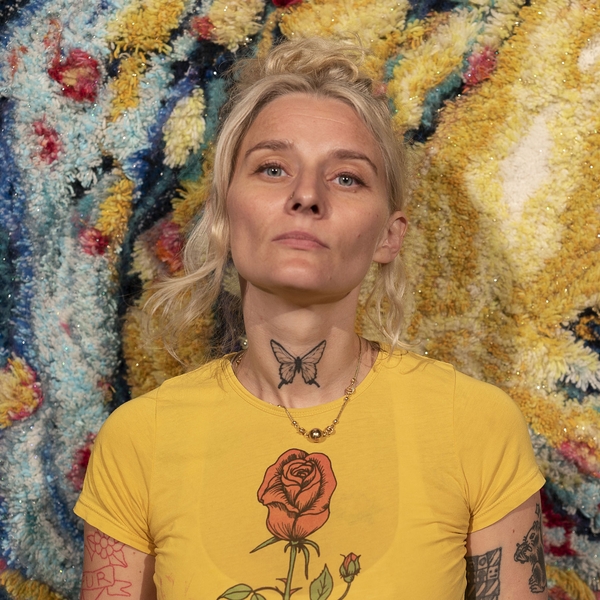
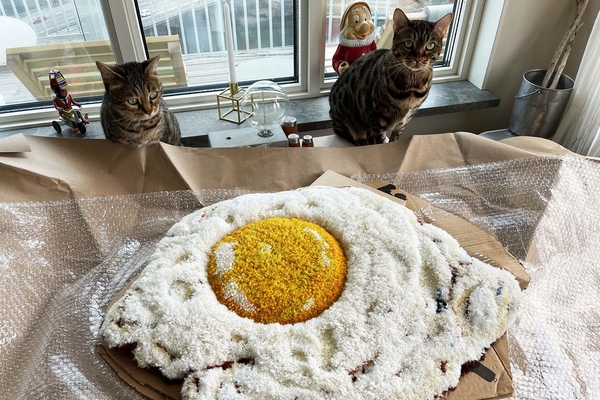
- What do you like the most about the tufting technique?
- I like that I almost lose control of what I do during the process. When I am working on the back of the fabric, I cannot see exactly what is taking shape on the front. I feel totally free from the critic inside me before I need to stop, step around and assess my work.
- Do you have a favourite material to work with?
- Wool is the main material used in tufting, because it is the easiest to cut and looks really nice and fluffy. But I have been experimenting a lot with other materials, including some that are not commonly used for this technique, such as glitter yarn and mohair.
- Why do you depict ordinary subjects in large, bold formats?
- It is fun to change the size and materials of everyday objects to surprise the viewer and make them question what they are looking at. I aim for a strong wow-factor in my pieces. When art is unexpected, it makes people forget everything else for a while. It helps them reset and see the world from another point of view.
- Is there a hidden meaning behind your pieces?
- There is a dark side to my objects. For example, the fried egg series was inspired by climate change. I was frying eggs in a pan and I thought that we are doing the same to our planet – cracking it open and consuming it fast. On the other hand, the idea for the spilled coffee piece came from my divorce. However, there is no need to know any piece's backstory in order to enjoy it.
Maja Michaelsdotter is a master artisan: she began her career in 2012 and she started teaching in 2018
Where
Maja Michaelsdotter
